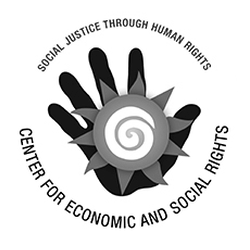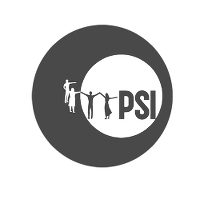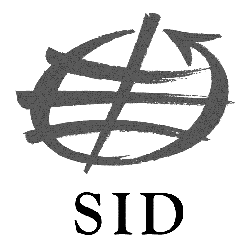By Volker Lehmann and Lennart Inklaar, Friedrich-Ebert-Stiftung New York Office
While the 2030 Agenda and the SDGs recognize the need to use natural resources in a sustainable manner, [fn]A/RES/70/1, Preamble, which makes reference to “all natural resources – from air to land, from rivers, lakes and aquifers to oceans and seas” (para 9), and SDG 12.2: “By 2030, achieve the sustainable management and efficient use of natural resources.” [/fn] there is no specific reference to the use of non-renewable resources, such as metals, minerals or fossil fuels. This is a critical omission as the removal of non-renewable resources from their original surrounding is an inherently unsustainable activity, for which costs and benefits have to be carefully addressed. Extraction of these resources on an industrial scale contributes to many of the ills of unsustainable development (corruption, economic stagnation, human rights violations, environmental degradation, etc.) that the 2030 Agenda now aims to rectify. And despite the Agenda’s shortcomings, if the SDGs were to be fully implemented, the question is not whether this would affect the governance of resource extraction and extractive industries, but how far-reaching the consequences would be.
Conversely, one may ask how far this sector would have to be transformed to make achieving the 2030 Agenda realistic. Mapping exercises have been carried out by the IFIs and UNDP to spell out the potential contributions that the extractive industry can make towards the fulfillment of each of the 17 SDGs. [fn]Columbia Center on Sustainable Investment/Sustainable Development Solutions Network/UNDP/World Economic Forum (2016) and International Finance Corporation/IPIECA/UNDP (2017). [/fn] These exercises are problematic in at least two ways. First, both the 2030 Agenda and the problems that arise from extractive industries are indivisible, interlinked and universal, so that accounting for progress narrowly goal-by-goal is not likely to help implement them in an integrated way. Second, it is questionable to what extent the extractive industry is willing on a voluntary basis to shift from being part of the problem to being part of the solution.
By the same token, UN Member States that signed onto the 2030 Agenda will not put its voluntary policy prescriptions into practice unless they are pressured to do so. An alternative, more productive approach towards implementing the SDGs would therefore be to see where the 2030 Agenda has the potential to either a) curb extractive industries or b) even transform the current, resource-consuming development model. It would of course also have to address the question of what extractive-industry dependent countries are meant to do.
Curbing the industry
Towards these ends, human rights-based approaches provide both an analytical tool and a framework for action. On a normative level, the 2030 Agenda was a missed opportunity for putting human rights at the centre as many of the goals and targets fall behind existing international obligations. Nevertheless, now that it is time to put the Agenda into practice, for a number of cross-cutting issues the reference to existing human rights lends itself to the kind of political action that could have a considerable impact on the operations of extractive industries.
A case in point regards land and resource rights, since control of and secure land titles for women, indigenous communities and other marginalized groups stand in the way of extractive industry projects and their large-scale land use. Such rights feature under SDG 1 on poverty, in target 1.4 (access to, ownership of, and control over land and natural resources); under SDG 2 on food security and sustainable agriculture in target 2.3 (equal access to land, particularly for indigenous communities); and under SDG 5 on gender equality in target 5.a (equal rights to land and natural resources for women).
These SDG targets continue the re-allocation of resource rights, which historically, as part of the UN’s decolonization and self-determination agenda, were reserved for sovereign States in the interest of their national development. [fn]A/RES/17/1803. [/fn] While such a State-centric approach left many behind, at least for indigenous peoples the 2007 UN Declaration on the Rights of Indigenous Peoples (UNDRIP) upgraded their rights to resources. UNDRIP requires indigenous peoples’ free, prior and informed consent to resource extraction projects affecting their lands, territories and other resources. Yet in reality, serious violations of indigenous peoples’ land, self-governance and cultural rights continue. And the renewed conflict between Indian nations of the Standing Rock reservation and the current US administration about the Dakota Access pipeline project demonstrates that this problem is not limited to any particular region of the world.
Instead, the problem falls squarely within what is commonly summarized under the term ‘resource curse’, meaning that abundant natural resources can fuel conflicts, inhibit economic performance and corrupt political regimes. SDG 16 on sustainable peace, access to justice and inclusive Institutions and SDG 17 on means of implementation and the global partnership for sustainable development appear to be particularly relevant as they include targets intended to reduce violence (16.1), curb illicit financial flows (16.4), reduce corruption and bribery (16.5), develop effective, accountable and transparent institutions (16.6), ensure public access to information (16.10), strengthen domestic resource mobilization (17.1) and mobilize additional financial resources (17.3).
The tool readily available that dovetails with these SDGs is the Extractive Industry Transparency Initiative (EITI). [fn]EITI (2016). [/fn] The EITI is today’s most comprehensive framework for the governance of natural resources and has led in many of its (currently 51) implementing countries to increased transparency and accountability regarding oil, gas and mineral resource revenues. Yet extending EITI membership – which is voluntary for both countries and corporations – will in itself not be sufficient to address the problem of accountability. For one, it is a misnomer, as it holds to account States and governments, which can be delisted as a result of non-compliance, but not so extractive industry corporations.
Moreover, the EITI’s limited scope on transparency cannot address the cross-cutting challenges of extractivism to sustainable development, that is, how to break away from a development model based on increased and unequal resource utilization in a world of finite resources – and how to combat the model’s negative ‘externalities’, in particular the impacts of climate change in different parts of the world.
The greater transformation—production and consumption
The extraction of resources is a means to meet a demand, which is mostly related to production and consumption. A systematic decrease in demand is where the future of the extractivist endeavour will be decided. Therefore, the systemic shortcomings of the SDGs, already highlighted in the 2016 Spotlight Report, [fn]www.2030spotlight.org/sites/default/files/contentpix/spotlight/Agenda-2030-en_web_accessible.pdf. [/fn] are particularly relevant also for resource extraction. Neither SDG 12 nor target 8.4 (“Improve…resource efficiency and sustainability in consumption and production”) under SDG 8 on sustainable growth, in and of themselves lead to less resource consumption as long as the mantra of more economic growth remains uncontested. Similarly, SDG 13: To have at least a 50 percent chance to meet the 2 degrees Celsius limit of the UN Framework Convention on Climate Change (UNFCCC), the majority of carbon-based energy resources would have to remain in the ground. At least on paper, the SDGs and the UNFCCC acknowledge that there is a common but differentiated responsibility between those who have historically profited from a resource-intensive economic development model and those who have not. But how and why extractive industries (many of which are State-owned) would give up the huge potential for profit remains uncharted territory - as does the issue of developing and implementing alternative models for countries whose economies are heavily, if not solely, dependent on resource extraction.
Clearly, Member States’ multilateral commitments and a hope for the industry’s voluntary compliance will not be sufficient. But the SDG implementation process can be used – on both the national and the international level – to highlight the discrepancy between the fine words of the 2030 Agenda and the resource extraction realpolitik and to keep up the political pressure, including in the High-level Political Forum (HLPF).
During the 2016 HLPF, attempts to hold accountable extractive industries were conspicuously absent. At a minimum, any extractive industry that considers itself a partner should have to sign the EITI and be subject to impact reporting. Only France, Germany and a few other countries declared support for the EITI in their voluntary national reviews. From 2017 onwards, the HLPF should become an opportunity to pressure UN Member States to use the SDGs as a tool to rein in the extractive sector.
Volker Lehmann is Senior Policy Analyst and Lennart Inklaar is Administration and Program Officer at the Friedrich-Ebert-Stiftung New York Office.
Columbia Center on Sustainable Investment/Sustainable Development Solutions Network/UNDP/World Economic Forum (2016): Mapping Mining to the Sustainable Development Goals: An Atlas. Geneva: World Economic Forum.
http://unsdsn.org/resources/publications/mapping-mining-to-the-sustainable-development-goals-an-atlas/
EITI (2016): How the EITI contributes towards meeting the Sustainable Development Goals. EITI Fact Sheet. Oslo.
https://eiti.org/sites/default/files/documents/eiti_and_the_sdg_targets_nov_2016_0.pdf
International Finance Corporation/IPIECA/UNDP (2017): Mapping Oil and Gas to the Sustainable Development Goals: Draft Atlas. New York: UNDP.
www.undp.org/content/dam/undp/library/Sustainable%20Development/Extractives/For%20Comment_Mapping%20the%20Oil%20and%20Gas%20industry%20to%20the%20Sustainable%20Development%20Goals%20-%20an%20Atlas_Feb2017.pdf








